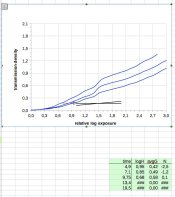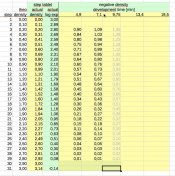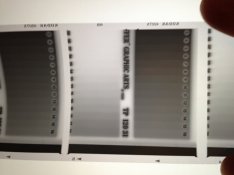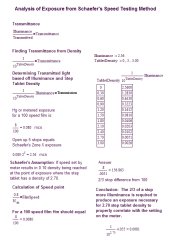Make sure your tape lets negligible light through.
Since chemical fog is the density increment on the film base due to processing, it should be measured without any density added from light exposure, so can't agree with you on that one.
I should have clarified, I was looking at Ralph's spead sheet from his website, I'm sure there's an explanation that I'm not aware of.









 Something is amiss.
Something is amiss.





